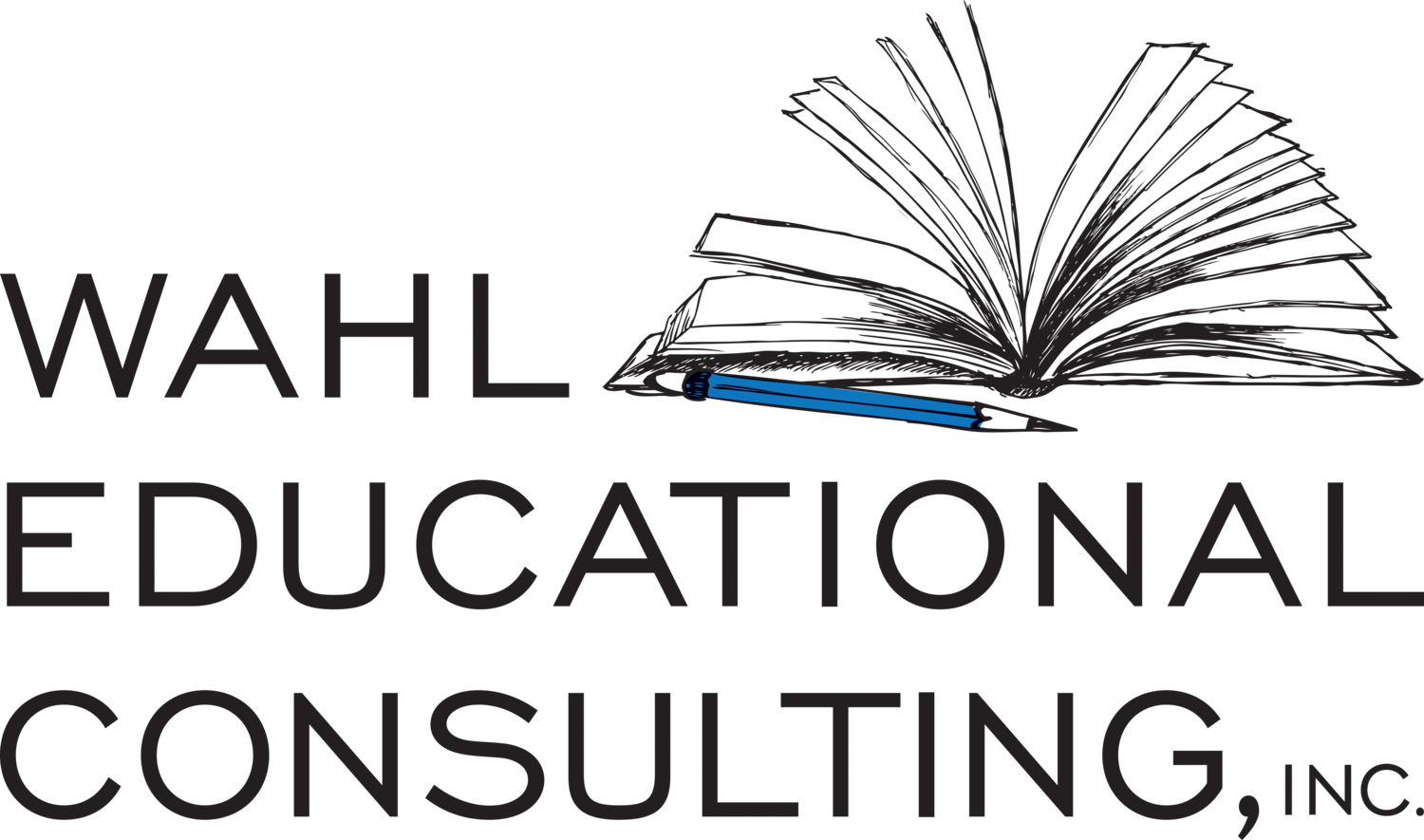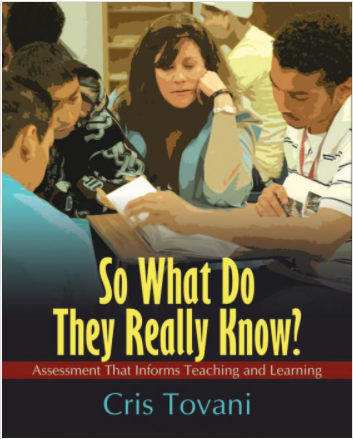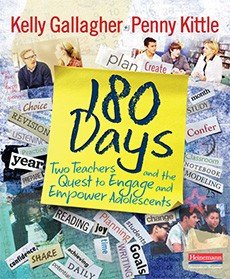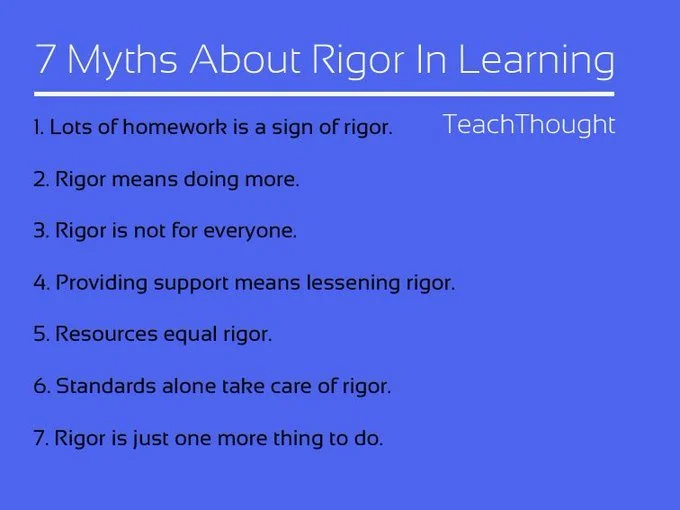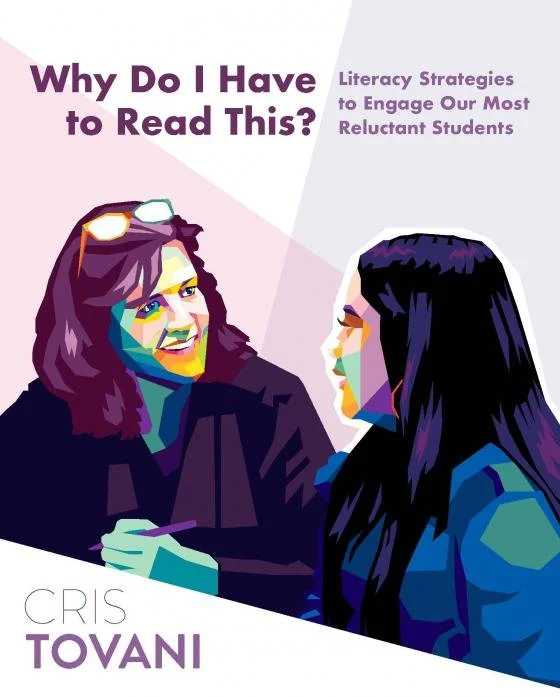Why Reading & Writing Workshops in middle and high school?
I advocate for a workshop structure in middle and high school classrooms. It is the best way we can ensure that students are getting the time they need to drive and share in the learning. Most school districts I work with begin teaching literacy through a workshop approach in kindergarten. When students leave workshop classrooms to enter middle and high schools where lecture is the primary instructional delivery mode, they become disengaged and their foundational culture of reading and writing quickly stagnates. How amazing would it be if students had the consistency of the workshop structure leaving fifth grade, knowing their agency, identities and choices are valued and prioritized as middle and high school students?
Cris Tovani speaks to this in her book, So What Do They Really Know? Assessment That Informs Teaching and Learning. “It is easier to get to know students deeply and collect meaningful data about them when I’m not standing up in front of my class lecturing the whole time. The workshop model has always kept me honest when it comes to sharing the classroom work with students. As a matter of fact, I’ve taken the time tenet of workshop so seriously that when I plan, my goal is to let students work on their own or in groups for two-thirds of the period, leaving one-third of the time for whole-class instruction.”
The structure of a workshop has to be flexible in middle and high school. Like in K-5 classrooms, there is still a minilesson, reading and/or writing work time with conferring and/or small group instruction, mid-workshop teaching and a debrief/share.
For teachers that have one 40-minute period for ELA, a workshop may need to be stretched out over two periods, where the minilesson and independent work begins and then continues a different period/day with more reading and/or writing and a share to wrap the two periods of work. In this scenario, teachers may choose to alternate between reading and writing work. I have always preferred trying to connect reading and writing work into one minilesson where students are self-directed in choosing how to balance their own reading and writing over several periods.
Kelly Gallagher and Penny Kittle speak to the struggle of time and wanting to have their students reading and writing every day in their book, 180 Days: Two Teachers and the Quest to Engage and Empower Adolescents. “Recognizing the importance momentum plays in our reading and writing lives reinforces the importance of developing momentum in our students, so we make time for both reading and writing every day in our classrooms. This predictable time affects our students’ thinking as well as their confidence.”
They balance the reading work their students will do, planning for the year. “Across the year, we plan for a balance between independent reading, book clubs, and core texts, so that students have choice in what they read 75% of the time.”
I have recently worked with several cohorts of amazing middle and high school ELA teachers to develop a culture of reading and engagement in learning overall. We know there will never be enough time but have pushed forward to tailor what a 40-minute period can look and feel like to incorporate both reading and writing every day for students (below). Our ultimate goal is to carve 1/3 of a period for whole-class instruction that is facilitated by the teacher and the other 2/3 of the period for students to be “behaviorally, emotionally and cognitively engaged” (Sam Bennett) in doing the work themselves. Teachers may choose to weave the third of their time for leading the work throughout the period, offering a couple 2-5 minute chunks of time for whole-class teaching , followed by 5-10 minutes chunks of time for students to try-on the work. This pacing would be based on students’ needs, learning targets, guiding questions and the demands of the literacy work. The workshop should feel like a dance between the teacher and students.
Minilesson
Minilessons usually run 5-8 minutes. Teachers begin by connecting to prior work, the current unit of study or students’ work, and then clearly stating the teaching point. Next, teachers demonstrate the teaching point through a step-by-step process, revisiting immersion work done previously. Students have an opportunity to practice the process and strategy after the demonstration during active engagement by trying it on in one of their books/writing, planning for their reading/writing work aloud, or in a section of a familiar demonstration text. Teachers end the minilesson by linking the strategy, as an addition to students’ reading/writing repertoire . Minilessons are often organized from concrete to abstract content within a unit of study and are adapted based on teachers’ assessment of student needs.
cultivating equity & relevancy in our text selections
It is critical to reflect on the diversity of our classroom / school libraries as well as the texts we select to read and use as mentors with students. Exploring sites like We Need Diverse Books, Children’s Book Council and National Education Association (NEA) is just the beginning of the work to cultivate diverse resources for our students. In 2021, I attended a NCTE (National Council of Teachers of English) session with Morgan Jackson. Morgan asked participants, “How are different members represented within our class materials? Do the materials allow all members to identify with something more than the pain of their ancestors? Of historical events?”
These questions reminded me of one of my favorite quotes by Rudine Sims Bishop - “Books are sometimes windows, offering views of worlds that may be real or imagined, familiar or strange. These windows are also sliding glass doors, and readers have only to walk through in imagination to become part of whatever world has been created or recreated by the author. When lighting conditions are just right, however, a window can also be a mirror. Literature transforms human experience and reflects it back to us, and in that reflection we can see our own lives and experiences as part of a larger human experience. Reading, then, becomes a means of self-affirmation, and readers often seek their mirrors in books.”
Morgan pointed out that cultivating diverse libraries and selecting texts with diverse representation of race and identity in mind is not enough. In Morgan’s words, “diversity concerns itself with saying groups are depicted. Equity concerns itself with how they are presented. Minoritized groups are not a monolith and deserve to see themselves in a variety ways.”
Cris Tovani’s book, Why Do I Have to Read This? Literacy Strategies to Engage Our Most Reluctant Students, pushed me to consider how relevant and engaging my text selections are. Cris describes what makes topics compelling for her:
“They are timeless and connected to a current event or issue.”
“I am curious about why something is occurring or has happened.”
“There is an aspect of controversy connected to the issue that forces me to explore different perspectives.”
There may be times in middle and high school where teachers feel “locked-in” to teaching a particular text. When Cris is told she has to teach or her students need to read a particular text, she, “reframes the directive by examining why the text is so compelling.”
What makes a text compelling could be that it reflects the human experience, that it has themes that are relevant to the very teenagers that are reading them, that they are about current/past historical events and their effects on individuals and society.
The gift of working and learning alongside Cris has taught me to start with compelling topics and create equitable, accessible text sets for students to explore these topics with. Text sets make it about, “studying an issue, examining it from multiple perspectives and then providing evidence to support the position that we choose to take.”
Student work Time with Conferring and/or Small Group Instruction
Reading work time may look like:
independent reading where students have free-choice to select books
group work where students are reading within text sets or book clubs
core text work around a whole-class read
Writing work time may look like:
independent writing where students are working on an evolving draft
partner / group work where students are reading their writing to each other for feedback
Based on students’ needs, teachers work to balance one-on-one conferring with small group instruction while students are reading and writing.
debrief/Share
At the conclusion of a workshop, students share how they tried the minilesson work in service of understanding what they read/wrote . Teachers may also use the share time to introduce upcoming reading/writing minilessons or work that unfolded during an individual student conference with the whole group.
